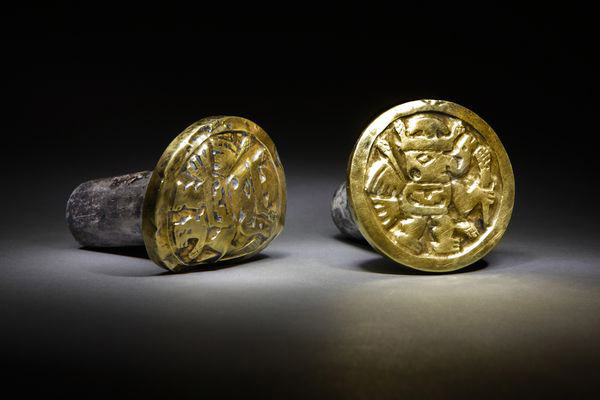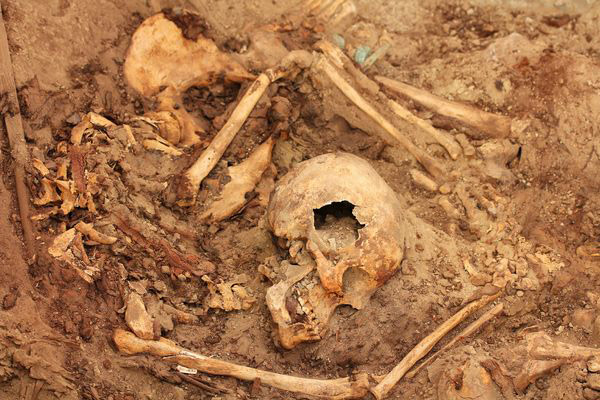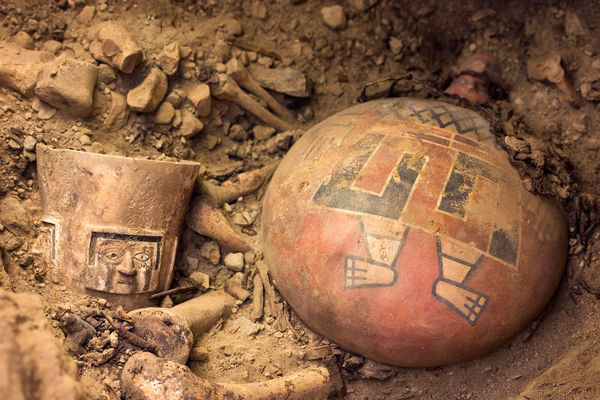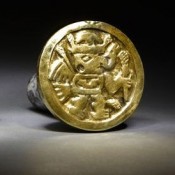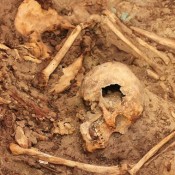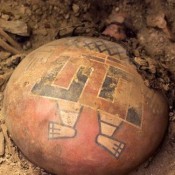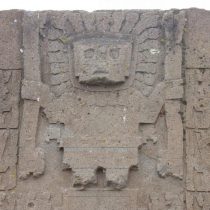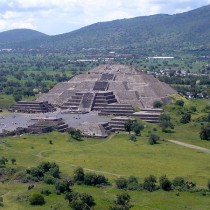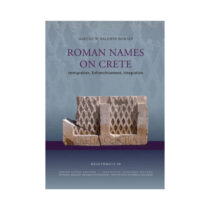The first unlooted imperial tomb of the Wari, the ancient civilization that built South America’s earliest empire between 700 and 1000 A.D. has been found in Peru.
According to archaeologist Milosz Giersz (University of Warsaw), his Polish-Peruvian team had suspected there was an underground tomb in the 110-acre site at El Castillo de Huarmey (north of Lima), where grave robbers had been digging for decades. This is why, when the team finally uncovered an ancient ceremonial room digging through rubble last September, they kept the findings secret. They proceeded likewise during the rest, most impressive discoveries: a large chamber under the ceremonial room, sealed with 30 tons of loose stone fill, which proved to be the main mausoleum, and was the burial place of many individuals, among them three Wari queens.
As reported by research sponsor National Geographic, “As the archaeologists carefully removed the fill, they discovered rows of human bodies buried in a seated position and wrapped in poorly preserved textiles. Nearby, in three small side chambers, were the remains of three Wari queens and many of their prized possessions, including weaving tools made of gold […].
“Mourners had also interred many other treasures in the room: inlaid gold and silver ear-ornaments, silver bowls, bronze ritual axes, a rare alabaster drinking cup, knives, coca leaf containers, brilliantly painted ceramics from many parts of the Andean world, and other precious objects. Giersz and his colleagues had never seen anything like it before”.
Digging quietly for months, to avoid looting, the archaeologists collected more than a thousand artifacts, including sophisticated gold and silver jewelry, bronze axes, and gold tools, along with the bodies of the three Wari queens and 60 other individuals, some of whom were probably human sacrifices.
The construction of an imperial mausoleum at El Castillo shows that Wari lords conquered and politically controlled this part of the northern coast, and likely played a key role in the downfall of the northern Moche kingdom. Intriguingly, one vessel from the mausoleum depicts coastal warriors battling axe-wielding Wari invaders. Analysis of the mausoleum-and other chambers that may still be buried-is only beginning. Giersz predicts that his team has another eight to ten years of work there. But already the finds at El Castillo promise to cast the Wari civilization in a brilliant new light. “The Wari phenomenon can be compared to the empire of Alexander the Great,” says Makowski. “It’s a brief historical phenomenon, but with great consequence.”
